DSD DAC is an architecturally better DAC than R2R
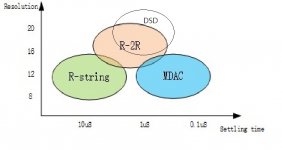
After years of research and development, a DSD fully balanced DAC was finally developed. Under the R2R architecture, he uses the ratio of 2R/R, a weighted output decoder. Under the DSD architecture, the resistance is directly output. In other words, the R2R DAC draws a line according to a single point, which has relatively large distortion, and there is no good way to test the impedance brought by the switch, so the accuracy will be greatly affected. In contrast, DSD DAC is connected to a line according to multiple points, so the accuracy of DSD DAC is much higher than that of R2R DAC. Specifically, in a DSD DAC, a fully balanced channel has 64 resistors, which is equivalent to 64 bits or 64 points, while single-ended has 32 bits. R2R DAC is 24bits at most, but many have only 16bits. Therefore, the single-ended resolution of DSD DAC has surpassed any R2R DAC. Based on the above-mentioned differences in architecture, DSD DAC has the opportunity to surpass R2R DAC, and with unparalleled advantages in details, momentum, etc., DSD DAC is the truly best DAC architecture, not R2R DAC. Of course, the final hearing effect of DSD DAC is still limited by the quality of resistance and power supply. Therefore, under the same DSD DAC architecture, the quality of resistance and power supply is used to distinguish.
In order to pursue the ultimate performance, the flagship model of A&C’s DSD DAC, in terms of resistance selection, we choose the American RA non-inductive fever resistance. There are ordinary and pure silver resistors to choose from. The sound of pure silver resistors is more delicate, loose and soft, with Extravagance. In terms of digital processing, the decoder adopts the 4th generation JUN-level digital processor. The processor is modified to a fever-level processor customized according to the requirements of the JUN level. It has powerful computing capabilities and can compute DSD signals up to 120MHz. At present, most DSD signals do not exceed 15MHz, so there is a great possibility for later upgrades. In addition to strong computing performance, the most important thing is to perform FIFO processing on the DSD signal, and to reshape the input data to output a square wave waveform close to the theory, so that the time distortion is reduced to a minimum. A&C's DSD DAC can output a strong current, up to 30ma. Currently, there are fewer manufacturers concerned about this concept. The digital signal also has requirements for the circuit. It is like adding the previous stage to the system. The output large current can easily drive the decoding chip behind, so that the sound will be more natural and transparent, and the output signal has ultra-low jitter. Distortion is further reduced.
In the I/V part, A&C's DSD DAC uses a non-negative feedback design, which has better sound processing. Common I/Vs are designed with feedback, which will compress the sound and reduce the details, but the design is simple. The output of IV uses the American JENSEN output transformer to make the sound more musical. You should have a deep understanding of the output that has been used well.
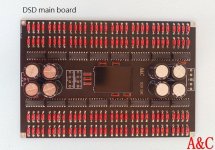
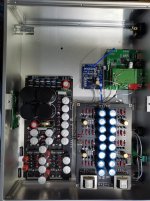
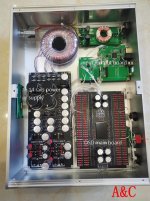
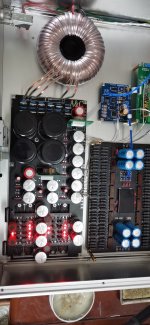
As shown in the picture below, DSD DAC has the opportunity to achieve higher resolution and faster settling time than R2R DAC, so DSD DAC is a better DAC than R2R Dac in terms of architecture.

After years of research and development, a DSD fully balanced DAC was finally developed. Under the R2R architecture, he uses the ratio of 2R/R, a weighted output decoder. Under the DSD architecture, the resistance is directly output. In other words, the R2R DAC draws a line according to a single point, which has relatively large distortion, and there is no good way to test the impedance brought by the switch, so the accuracy will be greatly affected. In contrast, DSD DAC is connected to a line according to multiple points, so the accuracy of DSD DAC is much higher than that of R2R DAC. Specifically, in a DSD DAC, a fully balanced channel has 64 resistors, which is equivalent to 64 bits or 64 points, while single-ended has 32 bits. R2R DAC is 24bits at most, but many have only 16bits. Therefore, the single-ended resolution of DSD DAC has surpassed any R2R DAC. Based on the above-mentioned differences in architecture, DSD DAC has the opportunity to surpass R2R DAC, and with unparalleled advantages in details, momentum, etc., DSD DAC is the truly best DAC architecture, not R2R DAC. Of course, the final hearing effect of DSD DAC is still limited by the quality of resistance and power supply. Therefore, under the same DSD DAC architecture, the quality of resistance and power supply is used to distinguish.
In order to pursue the ultimate performance, the flagship model of A&C’s DSD DAC, in terms of resistance selection, we choose the American RA non-inductive fever resistance. There are ordinary and pure silver resistors to choose from. The sound of pure silver resistors is more delicate, loose and soft, with Extravagance. In terms of digital processing, the decoder adopts the 4th generation JUN-level digital processor. The processor is modified to a fever-level processor customized according to the requirements of the JUN level. It has powerful computing capabilities and can compute DSD signals up to 120MHz. At present, most DSD signals do not exceed 15MHz, so there is a great possibility for later upgrades. In addition to strong computing performance, the most important thing is to perform FIFO processing on the DSD signal, and to reshape the input data to output a square wave waveform close to the theory, so that the time distortion is reduced to a minimum. A&C's DSD DAC can output a strong current, up to 30ma. Currently, there are fewer manufacturers concerned about this concept. The digital signal also has requirements for the circuit. It is like adding the previous stage to the system. The output large current can easily drive the decoding chip behind, so that the sound will be more natural and transparent, and the output signal has ultra-low jitter. Distortion is further reduced.
In the I/V part, A&C's DSD DAC uses a non-negative feedback design, which has better sound processing. Common I/Vs are designed with feedback, which will compress the sound and reduce the details, but the design is simple. The output of IV uses the American JENSEN output transformer to make the sound more musical. You should have a deep understanding of the output that has been used well.




Very good job, congratulations. This is a commercial project or an open project?
Best
Best
Last edited:
The plan is designed according to different market needs. You can put forward your needs and ideas, and we will decide on the situation after discussion. Then we open a group buy.
The group buy that may be opened on Diyaudio is the low-cost SMD resistor version.
The group buy that may be opened on Diyaudio is the low-cost SMD resistor version.
My experience with dac dsd a critical point is converting pcm to dsd. I think you use a standard board in the system that I think I remember costs about $ 30. I have experience with the version of that board for rapsberry pi and the experience is lousy. Have you made any modifications to improve your performance?
Resolution (reproducing the finest details with precision!?) is measured on the output and is given by; noise, distorsion (and its phase), phase error and bandwith.
These parameters don't care about implementation. The proof is in the measurement pudding. Or are you claiming listening impression resolution?
Your marketing of the Accusilicon AS318-b as *SUPER* low phase noise hasn't impressed a lot - rather, it seem to be a way to lure gullible people into buying nothing special at all really. Why should we believe you here?
//
These parameters don't care about implementation. The proof is in the measurement pudding. Or are you claiming listening impression resolution?
Your marketing of the Accusilicon AS318-b as *SUPER* low phase noise hasn't impressed a lot - rather, it seem to be a way to lure gullible people into buying nothing special at all really. Why should we believe you here?
//
As you can see from the photos, A&C's DSD DAC has tried to use the AK4137 conversion board and integrate our own developed reclock, which sounds very beautiful. As mentioned in the previous article, the level of DSD DAC depends on the quality of resistance and power supply. In other words, if you want a very beautiful sound, the cost cannot be too low. You can check the price of these high-quality resistors yourself, and then use simple arithmetic to estimate the cost.
Regarding the future development, we are trying to use Ian's reclock and bisesik's transformer to see if it can be improved. At the same time, it is more friendly to the majority of users of Ian's reclock, and it is convenient for them to use DSD DAC to obtain more beautiful sound.
However, the AK4137 has been out of stock recently, and it has become difficult to obtain the AK4137 conversion board. Therefore, we encourage users to use other software for upscaling, upscaling PCM to DSD, and then processing by DSD DAC.
HQPlayer by Signalyst available for Windows, Mac OS and Linux at a cost of 145,18 euro
Daphile Audiophile Music Server for x86 hardware, it is free and it sound near to HQPlayer but volume does not work with DSD setting enabled
JRiver Media Center available for Windows and Mac OS at a cost of $49.98 + ASIO Proxy freeware, volume does not work for DSD tracks
JRiver Media Center available for Windows and Mac OS at a cost of $49.98, volume does not work for DSD tracks
Foobar2000 + some modules freeware + ASIO Proxy freeware
PureDSD
Regarding the future development, we are trying to use Ian's reclock and bisesik's transformer to see if it can be improved. At the same time, it is more friendly to the majority of users of Ian's reclock, and it is convenient for them to use DSD DAC to obtain more beautiful sound.
However, the AK4137 has been out of stock recently, and it has become difficult to obtain the AK4137 conversion board. Therefore, we encourage users to use other software for upscaling, upscaling PCM to DSD, and then processing by DSD DAC.
HQPlayer by Signalyst available for Windows, Mac OS and Linux at a cost of 145,18 euro
Daphile Audiophile Music Server for x86 hardware, it is free and it sound near to HQPlayer but volume does not work with DSD setting enabled
JRiver Media Center available for Windows and Mac OS at a cost of $49.98 + ASIO Proxy freeware, volume does not work for DSD tracks
JRiver Media Center available for Windows and Mac OS at a cost of $49.98, volume does not work for DSD tracks
Foobar2000 + some modules freeware + ASIO Proxy freeware
PureDSD
Your marketing of the Accusilicon AS318-b as *SUPER* low phase noise hasn't impressed a lot - rather, it seem to be a way to lure gullible people into buying nothing special at all really. Why should we believe you here?
//
Accusilicon AS318-B is not a DIY product, it is in mass production and used by a large number of commercial manufacturers. Regarding the performance of Accusilicon AS318-b, there have been many expert reviews on Diyaudio, you can check it yourself. What's more, the measurement data is made public, and anyone who doesn't trust can buy it and use the instrument to measure the authenticity. The DIY clock signal generator expert, except for a bunch of text descriptions, did not use his instrument to measure AS318-B. I don't know how to comment on such behavior.
The point is that AS318-b is cheaper than CCHD-957. In other words, AS318-B is the best choice for less than $100. Taking into the expensive international postage, the AS318-B I sold is almost no profit. I just hope that more people will use their own ears to identify it, rather than listen to the comments of the experts of the DIY clock signal generator.
Last edited:
Resolution (reproducing the finest details with precision!?) is measured on the output and is given by; noise, distorsion (and its phase), phase error and bandwith.
These parameters don't care about implementation. The proof is in the measurement pudding. Or are you claiming listening impression resolution?
As described in detail above, DSD DAC will be better than R-2R DAC in terms of architecture. Whether the DSD DAC can have a beautiful sound depends on the quality of the resistance and power supply. Regarding the quality of resistance and power supply, if you are an expert, you can judge whether what I said is true or not by looking at the photos. Since you are a member of the DIY website, you should theoretically have a certain basic knowledge to make correct comments.
It's all just your personal opinion, sound preference or eager to do business. No facts to back your position.
"...you should theoretically have a certain basic knowledge to make correct comments"
I have and I just did.
//
"...you should theoretically have a certain basic knowledge to make correct comments"
I have and I just did.
//
I originally assumed that you have a certain understanding of the relevant technical knowledge, but apart from mentioning that you did it, there are no more real technical reviews. For example, do you think I am a lie, what is your technical basis? If not, I will not respond to you again, so as not to waste Internet resources.
Write at least one hundred words or more to qualify as a technical review. When have you read the reviews in the magazine and which one is less than 100 words? Your severe criticism is the driving force for our growth so try harder plesase.
Write at least one hundred words or more to qualify as a technical review. When have you read the reviews in the magazine and which one is less than 100 words? Your severe criticism is the driving force for our growth so try harder plesase.
Last edited:
Hi Tfive,
A question for you: The distortion rate of the DAC has reached a super low value. Will it be the best DAC in the world?
A question for you: The distortion rate of the DAC has reached a super low value. Will it be the best DAC in the world?
I have a way more relevant question: How low is "super low"?
Please put up a number (called specification) and the proove that your circuit adheres to your specification by showing the corresponding measurement.
Please put up a number (called specification) and the proove that your circuit adheres to your specification by showing the corresponding measurement.
Hi Tfive,
My question, if you can answer it correctly, is the answer to your question.
A question for you: The distortion rate of the DAC has reached a super low value. Will it be the best DAC in the world?
My question, if you can answer it correctly, is the answer to your question.
A question for you: The distortion rate of the DAC has reached a super low value. Will it be the best DAC in the world?
I can only ever answer it correctly as it's purely subjective and reflects my opinion:
If you show proper THD(+N), IMD, jitter suppression etc. measurements, the standard measurements usually shown on ASR - and they are outstanding - then yes, you have built the best DAC in the world - regarding these specs.
If you show proper THD(+N), IMD, jitter suppression etc. measurements, the standard measurements usually shown on ASR - and they are outstanding - then yes, you have built the best DAC in the world - regarding these specs.
Nope. I mean audio measurements of your DAC.
Going to leave it at that, you either don't want to provide measurements or you can't.
Edit: Last time I checked this language was called "English" and not "alien language" 😀
Going to leave it at that, you either don't want to provide measurements or you can't.
Edit: Last time I checked this language was called "English" and not "alien language" 😀
You must be an alien, otherwise, if you are a human, how can you tell if DAC sounds good or not according to THD(+N), IMD, jitter suppression etc.?
Stop here, we can’t communicate.
Stop here, we can’t communicate.
- Home
- Source & Line
- Digital Line Level
- DSD DAC is an architecturally better DAC than R2R